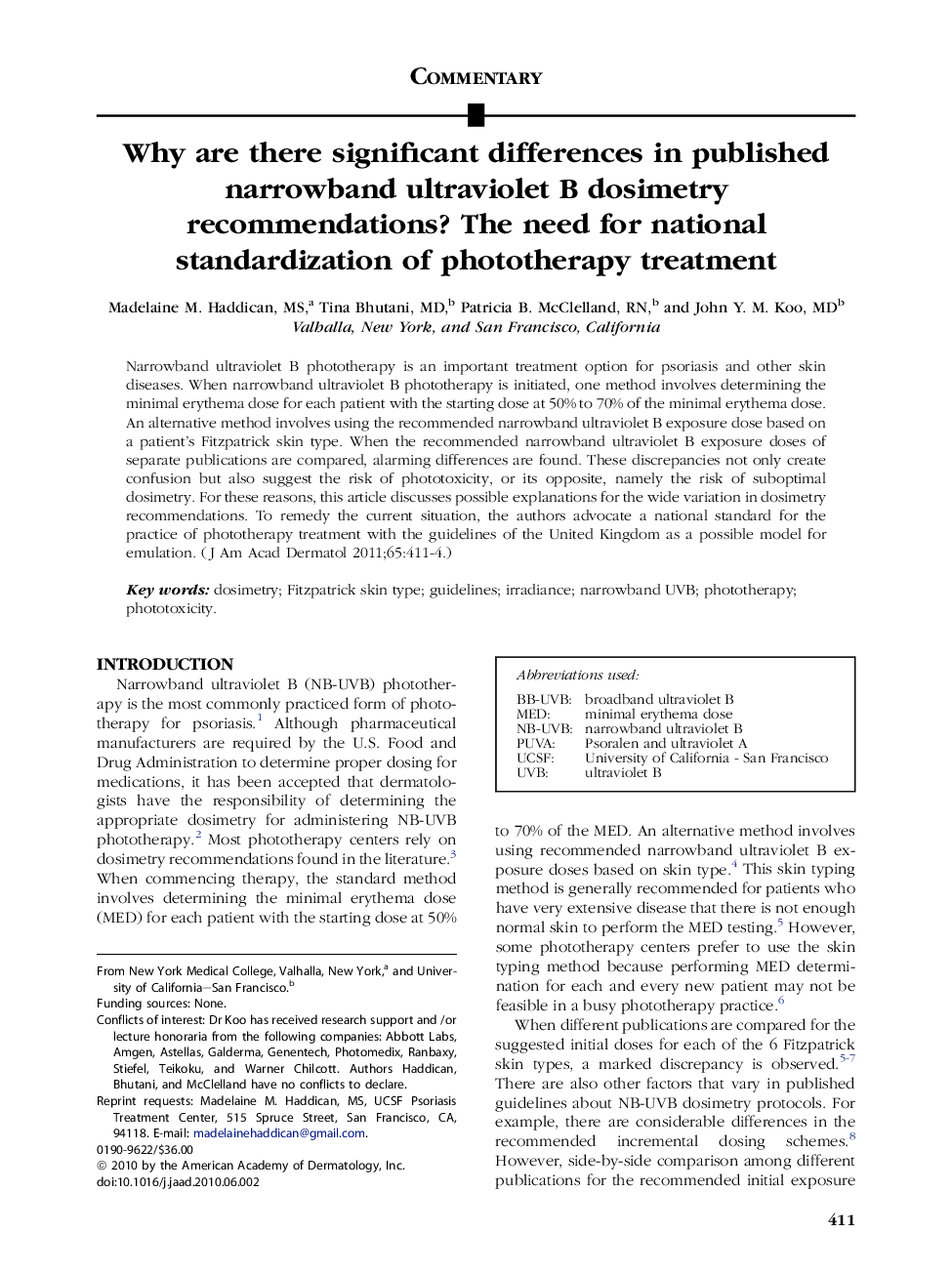| Article ID | Journal | Published Year | Pages | File Type |
|---|---|---|---|---|
| 3206455 | Journal of the American Academy of Dermatology | 2011 | 4 Pages |
Narrowband ultraviolet B phototherapy is an important treatment option for psoriasis and other skin diseases. When narrowband ultraviolet B phototherapy is initiated, one method involves determining the minimal erythema dose for each patient with the starting dose at 50% to 70% of the minimal erythema dose. An alternative method involves using the recommended narrowband ultraviolet B exposure dose based on a patient's Fitzpatrick skin type. When the recommended narrowband ultraviolet B exposure doses of separate publications are compared, alarming differences are found. These discrepancies not only create confusion but also suggest the risk of phototoxicity, or its opposite, namely the risk of suboptimal dosimetry. For these reasons, this article discusses possible explanations for the wide variation in dosimetry recommendations. To remedy the current situation, the authors advocate a national standard for the practice of phototherapy treatment with the guidelines of the United Kingdom as a possible model for emulation.
